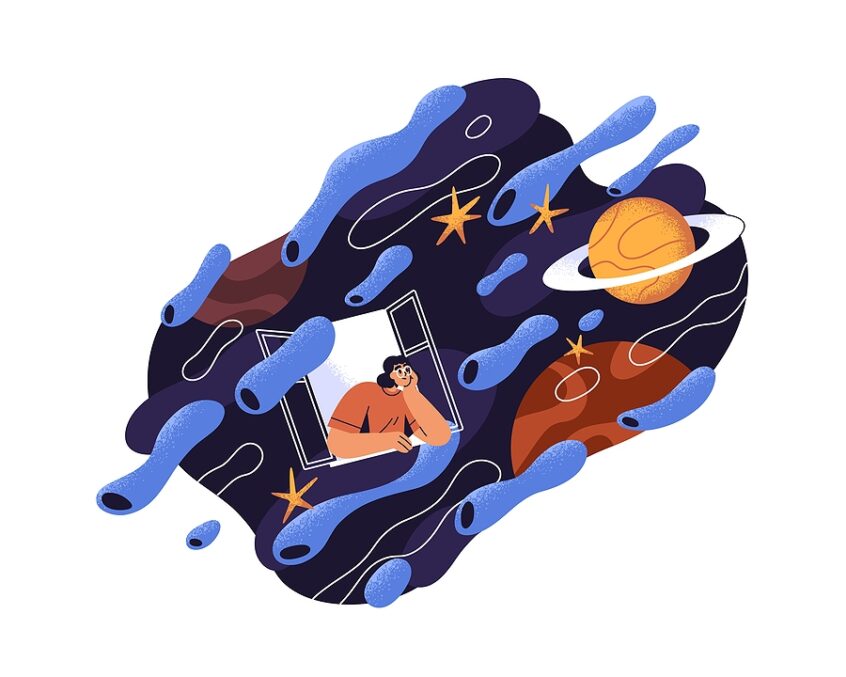Imagining as a dyslexic thinking strength is creating an original piece of work or giving ideas a new spin. (84% of dyslexics are above average at imagining)
The freedom of self to imagine. Einstein had an incredible imagination for thinking outside of conventional thought processes and connecting many greater things together.
One thing I have learned in all of my years of working with clients who have dyslexia or ADHD is that without confidence their imagining stays small and they rarely share their insights with others. Once they build up a little confidence in this area or others, their ability to imagine and connect things increases. It is really wild to watch at times.
Talk about imagining, I went and asked AI to compile a list for me of jobs that use a lot of imagination, and this is what I got back with a few little edits of my own.
Imagination plays a crucial role in various professions, allowing individuals to envision possibilities, innovate, and solve problems creatively. Here’s a list of jobs that utilize imagination to a significant extent:
- Creative Designers: Graphic designers, web designers, interior designers, and industrial designers all rely on their imagination to conceptualize and create visually appealing and functional designs.
- Writers and Editors: Novelists, screenwriters, journalists, and editors use their imagination to craft compelling stories, develop engaging characters, and convey information in an impactful manner.
- Artists and Musicians: Painters, sculptors, musicians, and composers express their imagination through various artistic mediums, creating original works that evoke emotions and inspire others.
- Entrepreneurs and Innovators: Entrepreneurs and innovators tap into their imagination to identify new opportunities, develop groundbreaking ideas, and transform industries.
- Architects and Engineers: Architects and engineers envision and design buildings, structures, and infrastructure, utilizing their imagination to solve complex problems and create functional and aesthetically pleasing spaces.
- Scientists and Researchers: Scientists and researchers employ their imagination to formulate hypotheses, design experiments, and interpret results, pushing the boundaries of knowledge and understanding.
- Game Designer: Game designers use their imagination to create video games, board games, and other interactive experiences. They use their imagination to develop characters, storylines, and rules that engage players.
- Motivational Speaker: Motivational speakers use their imagination to inspire and motivate others. They use their imagination to tell stories and to share ideas that help people reach their full potential.
- Therapist: Therapists use their imagination to help their clients understand and overcome their challenges. They use their imagination to develop strategies and techniques that help clients heal and grow.
- Marketers and Advertising Professionals: Marketing and advertising professionals use their imagination to develop creative campaigns, craft compelling messages, and capture the attention of consumers.
- Product Developers and Designers: Product developers and designers rely on their imagination to envision new products, features, and functionalities, striving to create innovative and user-friendly solutions.
- Animators and Special Effects Artists: Animators and special effects artists bring imagination to life by creating visually stunning and realistic characters, environments, and effects in films, television, and video games.
These are just a few examples of the many professions that utilize imagination as a powerful tool for creativity, innovation, and problem-solving. Imagination is a valuable asset in any field, allowing individuals to think outside the box and make a significant impact on the world around them.
Well, that did a nice job of summing that up for me. I use my imagination to translate information through video, to tell stories that are compelling, to connect things and processes that others don’t see, and to dream really big dreams for myself and others.
Often my clients will hear me say, “Imagin if…”and I will lay out this whole wide possibility and they will start to see it with me. And once they start to see it, they imagine my idea into a whole new thing that is now their idea and future possibility.
I have clients who imagine whole companies into existence, who imagine whole New York Times best-selling books, who write software programs that educate students, who create better ways to sell things, who find new ways to clean up water, who teach and train through video, and so many more things.
It’s time to start seeing your imagination for the gift that it can be and enjoying it as a strength.
